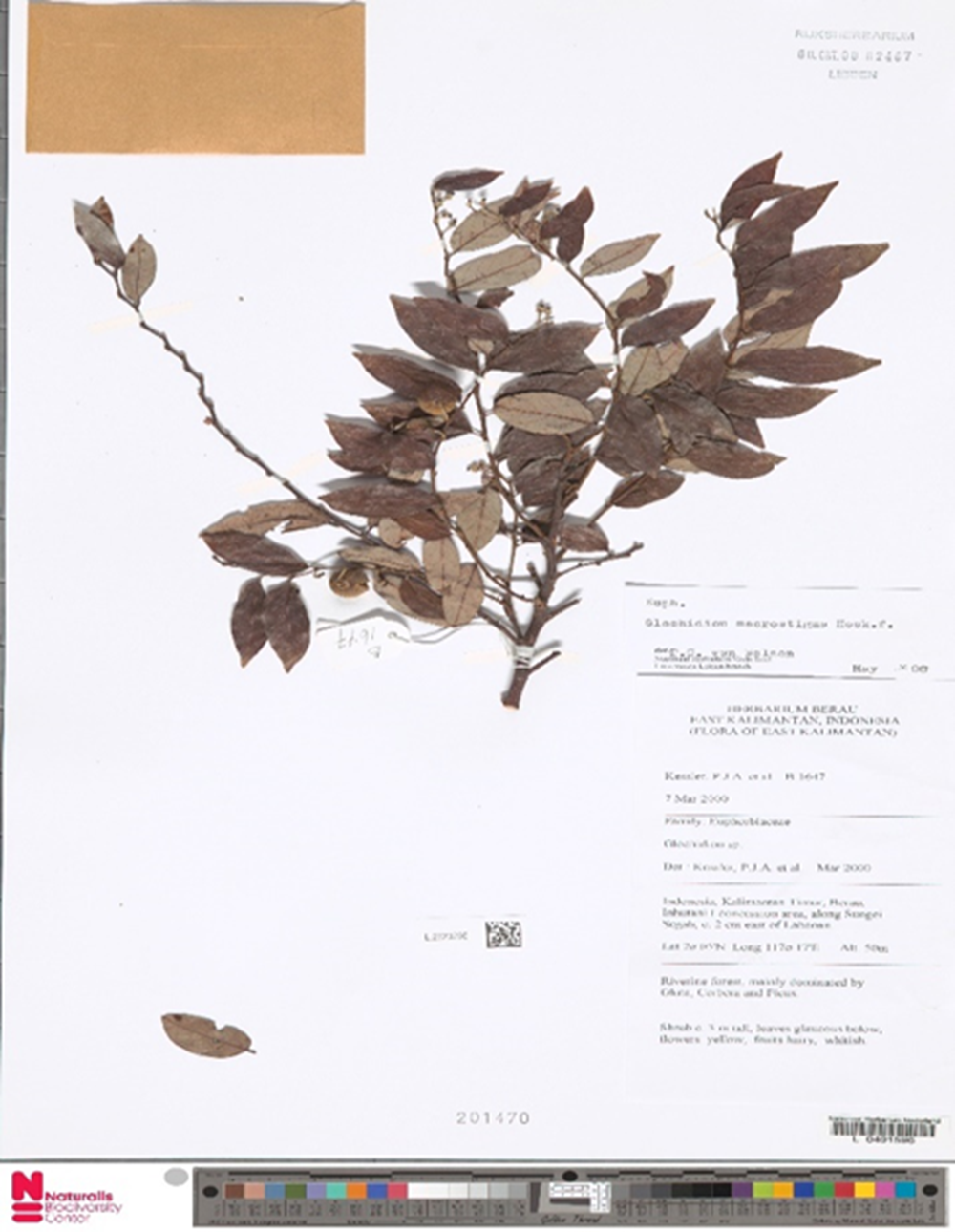Glochidion macrostigma
Hook.f.
Phyllanthaceae
Nama : –
Deskripsi : Perdu, tinggi pohon 4−5 m, pepagan luar abu-abu tua, berlekah, pepagan dalam jambon, menyerabut. Daun tunggal, berseling; tangkai daun pendek; helain daun bundar telur-lonjong, jorong-lonjong, atau melanset; pangkal daun meruncing-menumpul, terkadang asimteris; ujung daun meruncing; tepi daun mengutuh; pertulangan daun menyirip, 5−8 pasang; permukaan bawah daun hijau-kebiruan. Perbungaan soliter, aksiler. Bunga biseksual, kelopak hijau-kekuningan; mahkota kuning muda; kepala putik kecoklatan. Buah kapsul, bulat-pipih, permukaan berlekuk-dangkal, kehijauan pucat; berambut, keputihan.
Ekologi : Persebaran alami dari wilayah Malaysia dan Indonesia (Jawa dan Kalimantan). Pada umumnya tumbuh pada ekosistem hutan dataran rendah seperti hutan primer dan hutan sekunder. Tumbuh pada hutan riparian, hutan lahan basah, dan lahan terbuka. Referensi: L.2223249!; L.2223250!; L.2223254! (digital spesimen).
Kegunaan : –

